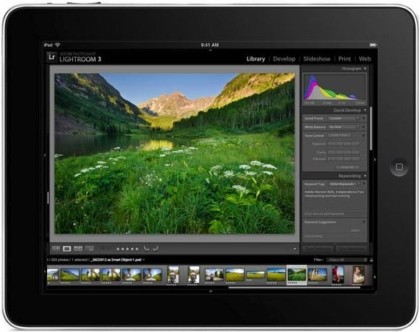

If the process is stuck for too long, killing the application and restarting it resolves the issue. Most of the time, syncing works even if the application is not in the foreground. It seems to require leaving Lightroom CC open all the time to accelerate the process. Once imported, syncing photos to Adobe’s cloud can be very slow even on a fast internet connection but my experience is not consistent. Importing photos is fast, probably as fast as importing images on my 2017 iMac, thanks to the iPad Pro USB-C port. The import experience OK to disconnect media Import RAW images progress How fast the process is compared to a traditional computer? How is the iPad Pro faring as a device to process RAW images? Is the iPad version of Lightroom CC enough to process RAW images? Is there anything important missing in doing so? Read on. How cool is that? See for yourself in the following screenshot. In other words, thanks to iPadOS 13.3 2 which is the minimum version required, with the 2018 iPad Pro, a USB-C hub or adaptor, you can now directly import your RAW images just like we do on a traditional computer. According to the release notes 1: You can now connect your mobile to a camera or SD card reader and directly import photos and videos to Lightroom, without a hassle. Late December 2019, Adobe released version 3.1 of Lightroom CC with support for RAW image import. Has the time come for the iPad Pro to be the sole RAW image processing device for amateurs and professional photographers? Do we still require the full-featured Lightroom Classic on a traditional computer? What is it like to process 300 RAW images on the iPad Pro these days? Following the return from vacation in Cuba before the pandemic hit, I took the opportunity to experience RAW images processing images using Lightroom CC on my 2018 11” iPad Pro. 5 min read Already imported RAW images are dimmed.


 0 kommentar(er)
0 kommentar(er)
